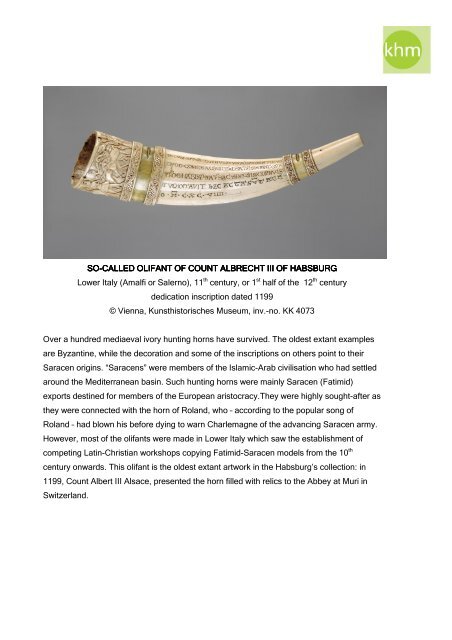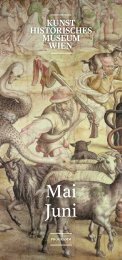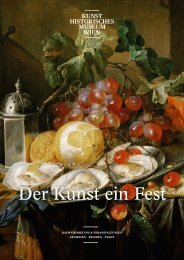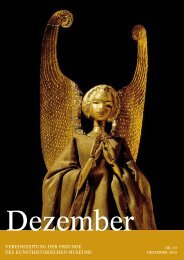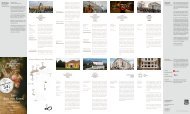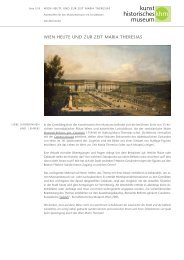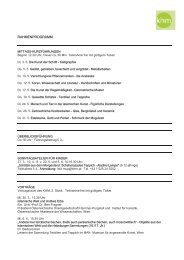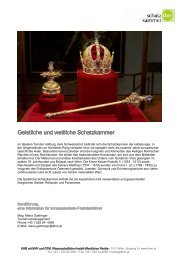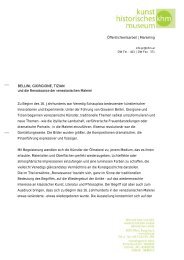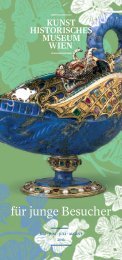Important objects - Kunsthistorisches Museum Wien
Important objects - Kunsthistorisches Museum Wien
Important objects - Kunsthistorisches Museum Wien
Create successful ePaper yourself
Turn your PDF publications into a flip-book with our unique Google optimized e-Paper software.
SO SO-CALLED SO CALLED OLIFANT OLIFANT OF OF COUNT COUNT ALBRECHT ALBRECHT III III III OF OF HABSBURG<br />
Lower Italy (Amalfi or Salerno), 11 th century, or 1 st half of the 12 th century<br />
dedication inscription dated 1199<br />
© Vienna, <strong>Kunsthistorisches</strong> <strong>Museum</strong>, inv.-no. KK 4073<br />
Over a hundred mediaeval ivory hunting horns have survived. The oldest extant examples<br />
are Byzantine, while the decoration and some of the inscriptions on others point to their<br />
Saracen origins. “Saracens” were members of the Islamic-Arab civilisation who had settled<br />
around the Mediterranean basin. Such hunting horns were mainly Saracen (Fatimid)<br />
exports destined for members of the European aristocracy.They were highly sought-after as<br />
they were connected with the horn of Roland, who – according to the popular song of<br />
Roland – had blown his before dying to warn Charlemagne of the advancing Saracen army.<br />
However, most of the olifants were made in Lower Italy which saw the establishment of<br />
competing Latin-Christian workshops copying Fatimid-Saracen models from the 10 th<br />
century onwards. This olifant is the oldest extant artwork in the Habsburg’s collection: in<br />
1199, Count Albert III Alsace, presented the horn filled with relics to the Abbey at Muri in<br />
Switzerland.


